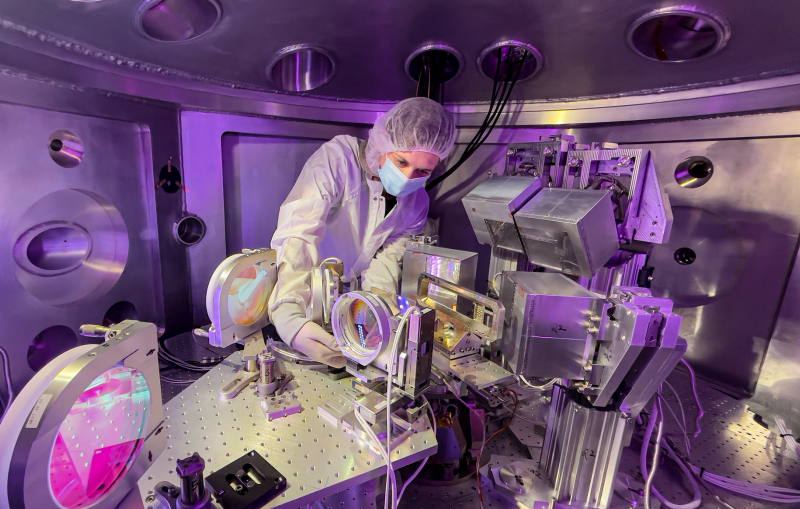Photograph
Chandra Curry at the Matter in Extreme Conditions experimental hutch 6 at LCLS.

The LCLS beam with its high peak brightness, short pulse duration, and tunable X-ray photon energy provides revolutionary capabilities to study the transient behavior of matter in extreme conditions. The particular strength of the Matter in Extreme Conditions (MEC) instrument is to combine the unique LCLS beam with high power optical laser beams, and a suite of dedicated diagnostics tailored for this field of science.
Chandra Curry at the Matter in Extreme Conditions experimental hutch 6 at LCLS.
